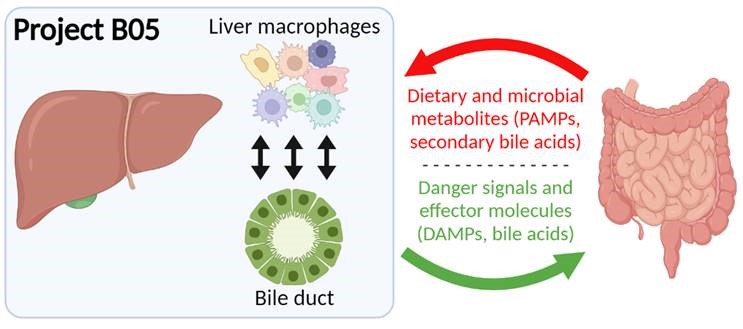B05: Impact of gut-liver communication on hepatic macrophage composition and function
– Continued project –
The driving hypothesis of project B05 is that gut-derived signals modulate the composition and phenotypic activation of hepatic macrophages, thereby determining their functional roles in liver homeostasis and disease. Our findings from the first funding period led to a comprehensive, yet evolving picture of the liver macrophage landscape in chronic liver diseases associated with gut barrier dysfunction. We evidenced immense macrophage diversity, differential responsiveness to gut-derived signals among macrophage populations, highly orchestrated spatial organisation of liver macrophage subsets, and close proximity of disease-defining macrophages with ductular cells, opening novel research axis for the second funding period. Understanding the mechanisms linking myeloid cell recruitment and activation pattern to disease progression will help to identify novel therapeutic axis for chronic liver disease management.
In this project we will
- Obtain a granular characterisation of spatially confined ‘gut-signal responsive’ macrophage subsets in human liver diseases
- Investigate the effects of microbial and bile (duct)-derived signals on macrophage functional roles
- Unravel the consequences of gut- and bile duct-derived signals on macrophage functional polarisation and liver disease progression

Figure: In the second funding period, project B05 will focus on dissecting the functional alterations of liver macrophages induced by gut- and bile duct-derived signals.
